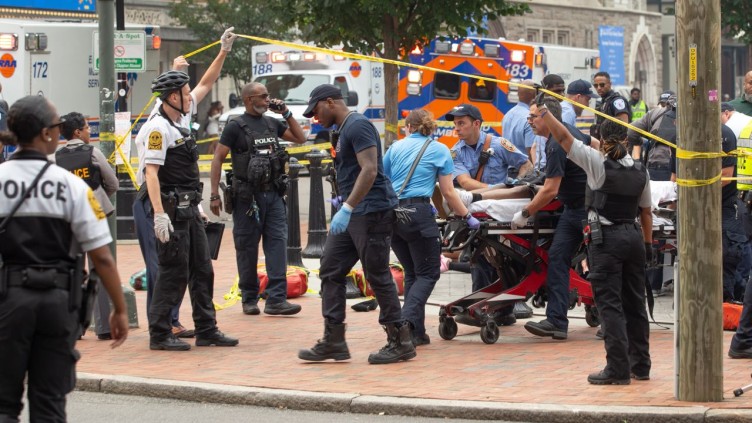Deprecated: Creation of dynamic property ET_Builder_Module_Comments::$et_pb_unique_comments_module_class is deprecated in /home4/readynow/public_html/wp-content/themes/Divi/includes/builder/class-et-builder-element.php on line 1425
US Mass Shootings
More than 300 Mass Shootings in U.S. at 2023’s Halfway Point
By Steve Harrison and ReadyGlobal
On a day meant to celebrate academic achievements and new beginnings, tragedy struck when a high school graduation ceremony at Richmond’s Monroe Park turned into a nightmare. An active shooter opened fire, leaving behind a devastating scene of chaos and grief. This horrifying incident serves as a painful reminder of the urgent need for schools to be prepared for active shooter or active assailant situations. Ensuring the safety and well-being of students and staff should be a top priority for educational institutions.
The Richmond shooting, which occurred on June 6th, has already fallen to page three, chronologically, on a comprehensive list of mass shootings year to date on Gun Violence Archive. Since the Richmond shooting, 51 additional mass shootings have devastated families in the USA in the last three weeks.
The importance of preparation and key measures that schools should have in place to effectively respond to such emergencies are explored below:
Comprehensive Emergency Response Plans: Every school should have a well-defined and regularly updated emergency response plan that addresses various potential threats, including active shooter situations. These plans should be created in consultation with local law enforcement agencies, ensuring effective coordination between school staff and first responders. Schools must conduct routine drills and exercises to familiarize students and staff with the emergency protocols, enabling swift and decisive action in times of crisis.
Enhanced Security Measures: Schools should implement robust security measures to deter potential threats and detect suspicious activity. These measures may include controlled access points, video surveillance systems, metal detectors, and trained security personnel. Clear protocols for visitor registration and identification should be established to maintain a secure environment within the school premises.
Communication Systems: Effective communication is crucial during an active shooter or active assailant situation. Schools should invest in reliable communication systems that enable quick dissemination of information to students, staff, and law enforcement. This may include emergency notification systems, panic buttons, intercoms, and mobile apps that provide real-time updates and instructions to those on campus.
Mental Health Support and Threat Assessment: Early intervention and proactive mental health support play a vital role in preventing violence. Schools should prioritize mental health services and provide resources for students who may be struggling. Additionally, implementing a threat assessment program can help identify and address potential threats before they escalate. Trained professionals should be available to assess and intervene in cases where students exhibit concerning behavior or express violent intentions.
Law Enforcement Collaboration: Collaboration with local law enforcement agencies is essential for an effective response to an active shooter situation. Schools should establish relationships with law enforcement and engage in joint training exercises. Police officers should be familiar with the school layout, enabling them to respond swiftly and navigate the premises during an emergency. This collaboration facilitates a coordinated and efficient response, potentially saving lives.
Student and Staff Training: Educating students and staff about active shooter response procedures is crucial. Schools should provide training sessions that teach individuals how to recognize warning signs, respond to imminent danger, and utilize survival strategies such as lockdowns, barricading, or evacuation. Additionally, training should emphasize the importance of remaining calm and providing accurate information to authorities during emergency situations.
The recent shooting at Richmond’s Monroe Park serves as a tragic reminder of the importance of preparedness in school activities – whether on or off campus. To ensure the safety of students and staff, educational institutions must have comprehensive emergency response plans, enhanced security measures, effective communication systems, mental health support, collaboration with law enforcement, and regular training sessions. By prioritizing these measures, schools can create a safer environment and be better equipped to respond to active shooter or active assailant situations, fostering a sense of security and well-being for all.
Special thanks to Gary Terrill for his contribution to this article.


0 Comments